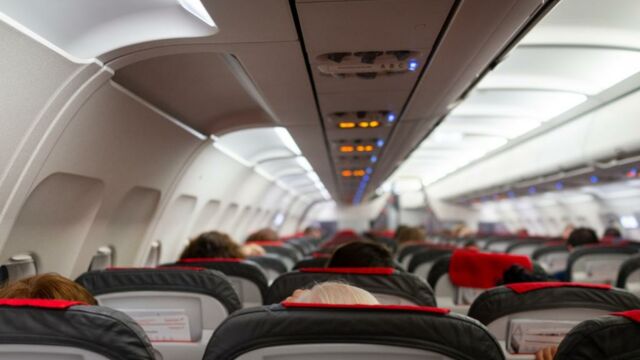As ecology becomes increasingly important in the minds of the general public, certain means of transport are beginning to be singled out for criticism. These include the most polluting, such as private jets and cruise ships. Commercial aircraft are also less en vogue, with some travellers opting for less distant destinations to reduce their carbon footprint. And a new study, published in Geophysical Research Letters, has just what it takes to motivate us to keep it close to home.
Discover our latest podcast
Turbulence is almost unavoidable when flying
For some people, the very idea of flying can trigger palpitations several days before take-off. This irrational fear is known as aviophobia. It can be treated and cured, but it can demotivate even the most phobic from taking to the skies. The source of their anxiety? The crash, of course (statistically very rare), but also the famous turbulence, which can add a little spice to the trip.
It's important to note that these air movements are harmless, and that modern aircraft are designed to withstand extremely violent turbulence, even if the most violent can cause some injury and damage. But if these shocks are enough to make you anxious, the next few decades may well be complicated for you if you decide to take the plane.
Climate change causes more frequent turbulence
And this is not by chance. And this is no accident: according to a new study published in the journal Geophysical Research Letters, they have been increasing in number and duration since the late 1980s, and this is linked to pollution.
According to our colleagues at GEO:
At an average point in the North Atlantic - on one of the world's busiest air routes - the total annual duration of severe turbulence has risen from 17.7 hours in 1979 to 27.4 hours in 2020, an increase of 55%.
More specifically, the study focuses on 'clear-sky turbulence' (CCT), which pilots and instruments cannot predict. BFMTV weather reporter Sandra Larue explains:
"Aircraft pass through "shear zones", i.e. areas where updrafts and downdrafts of different speeds meet. The increase in greenhouse gases and abrupt temperature changes linked to global warming are likely to increase this wind shear".
This article has been translated from Gentside FR.
Read more:
⋙ Ever wondered how planes are protected from thunderstorms? This is all you need to know
⋙ Airplane ear: Here are some genius hacks to pop your blocked ears while on a plane
Sources used:
Geophysical Research Letters: Evidence for Large Increases in Clear-Air Turbulence Over the Past Four Decades
GEO: "Attachez votre ceinture" : les turbulences en avion se renforcent avec le réchauffement climatique















